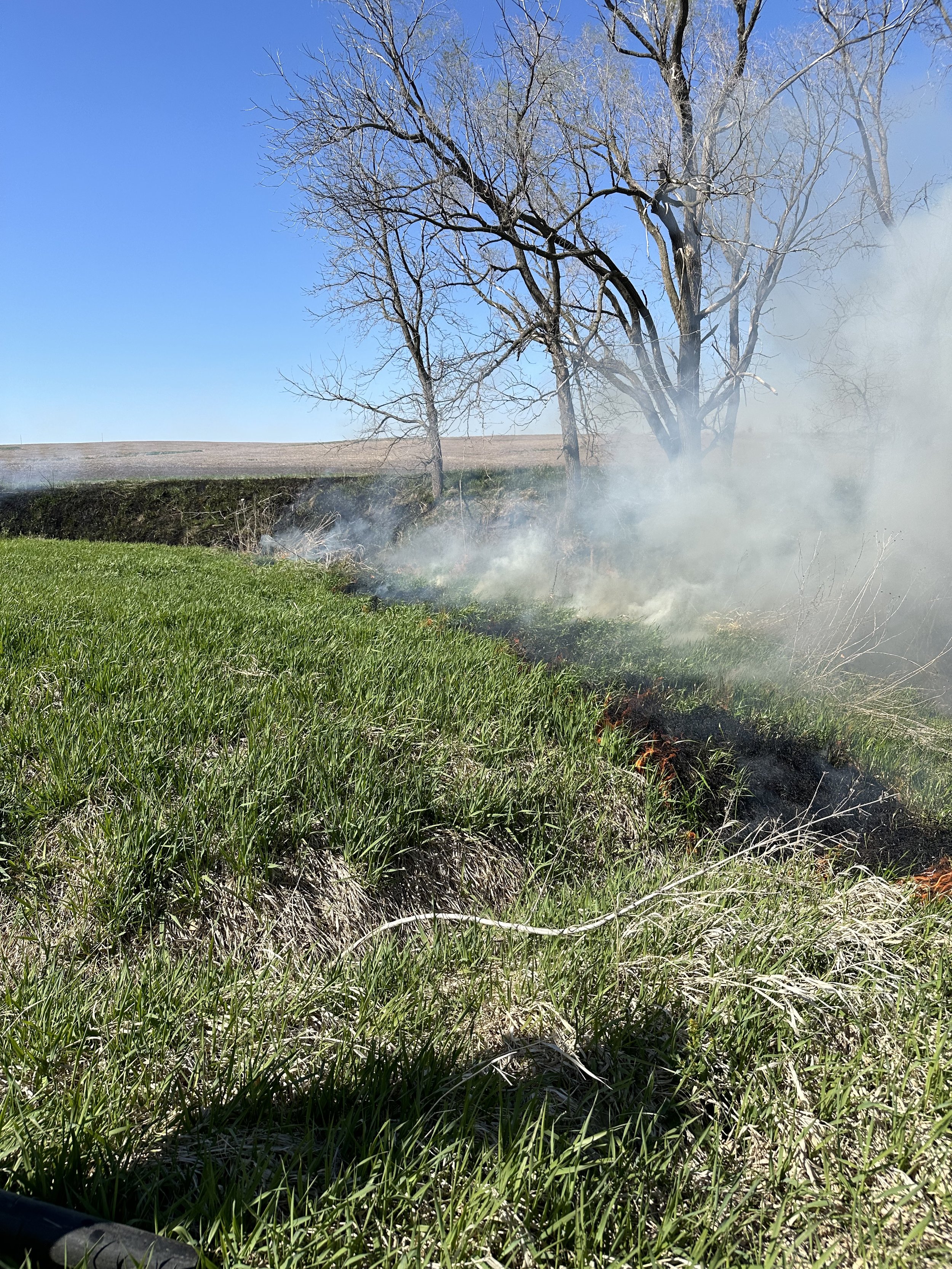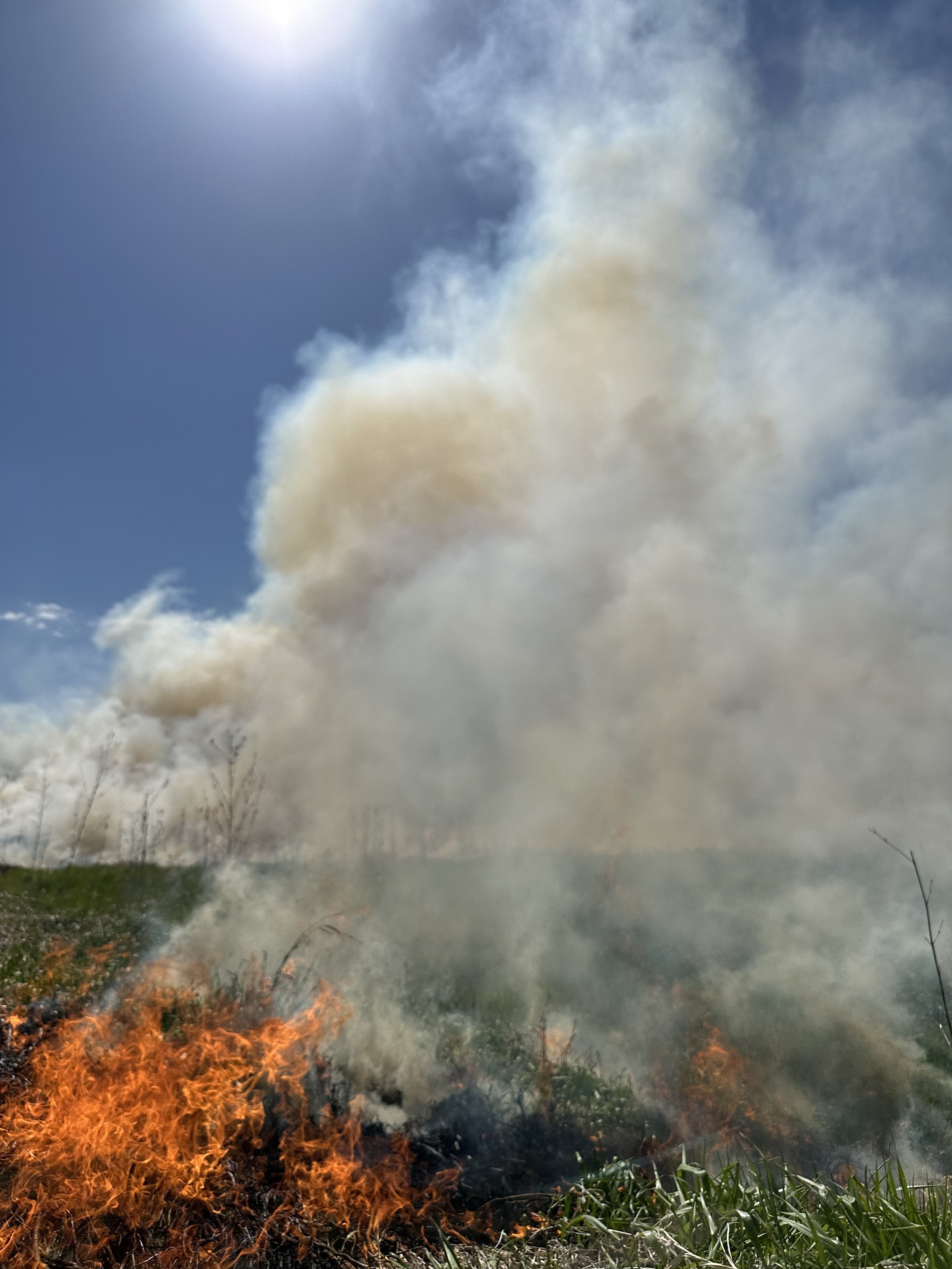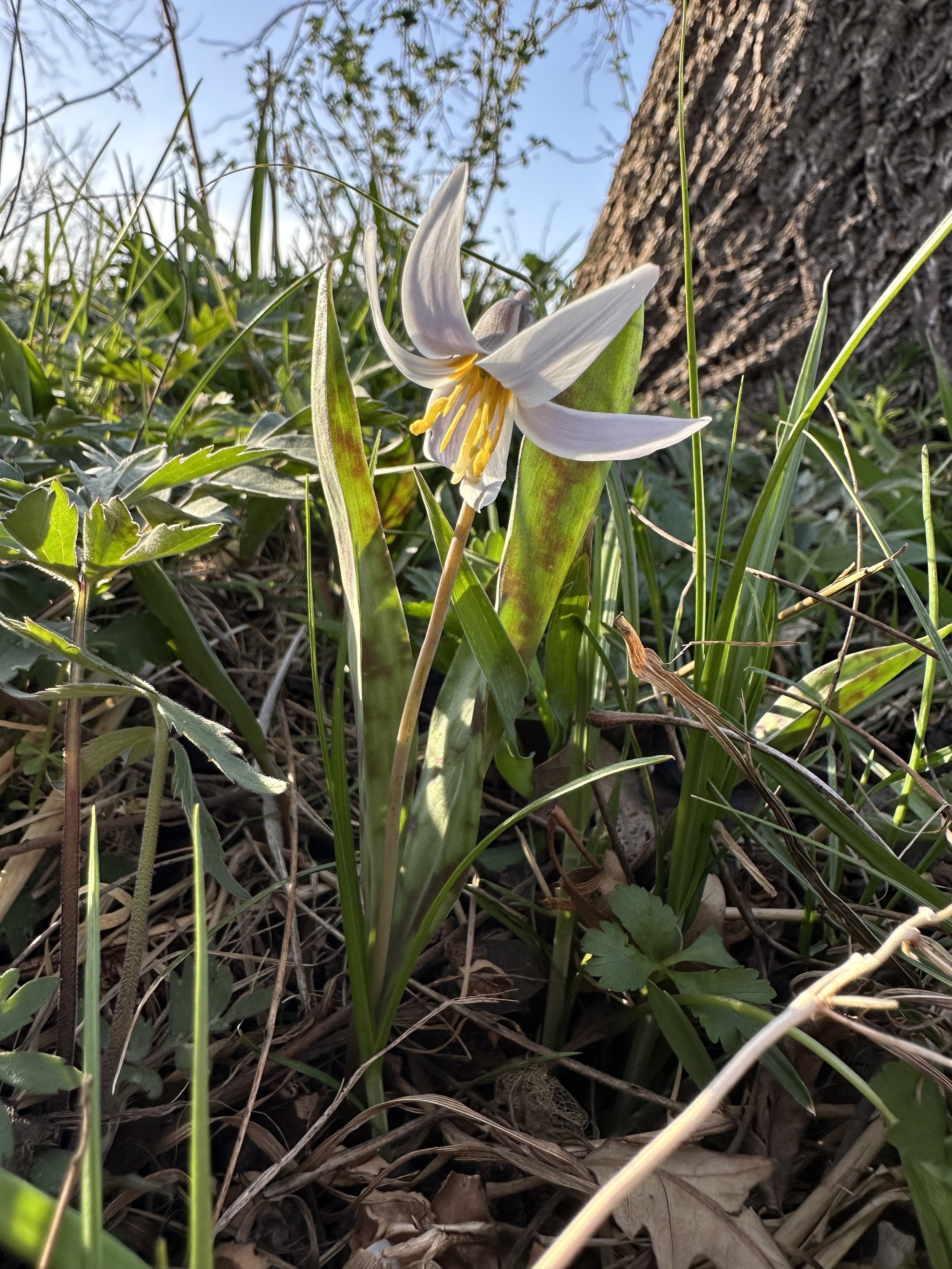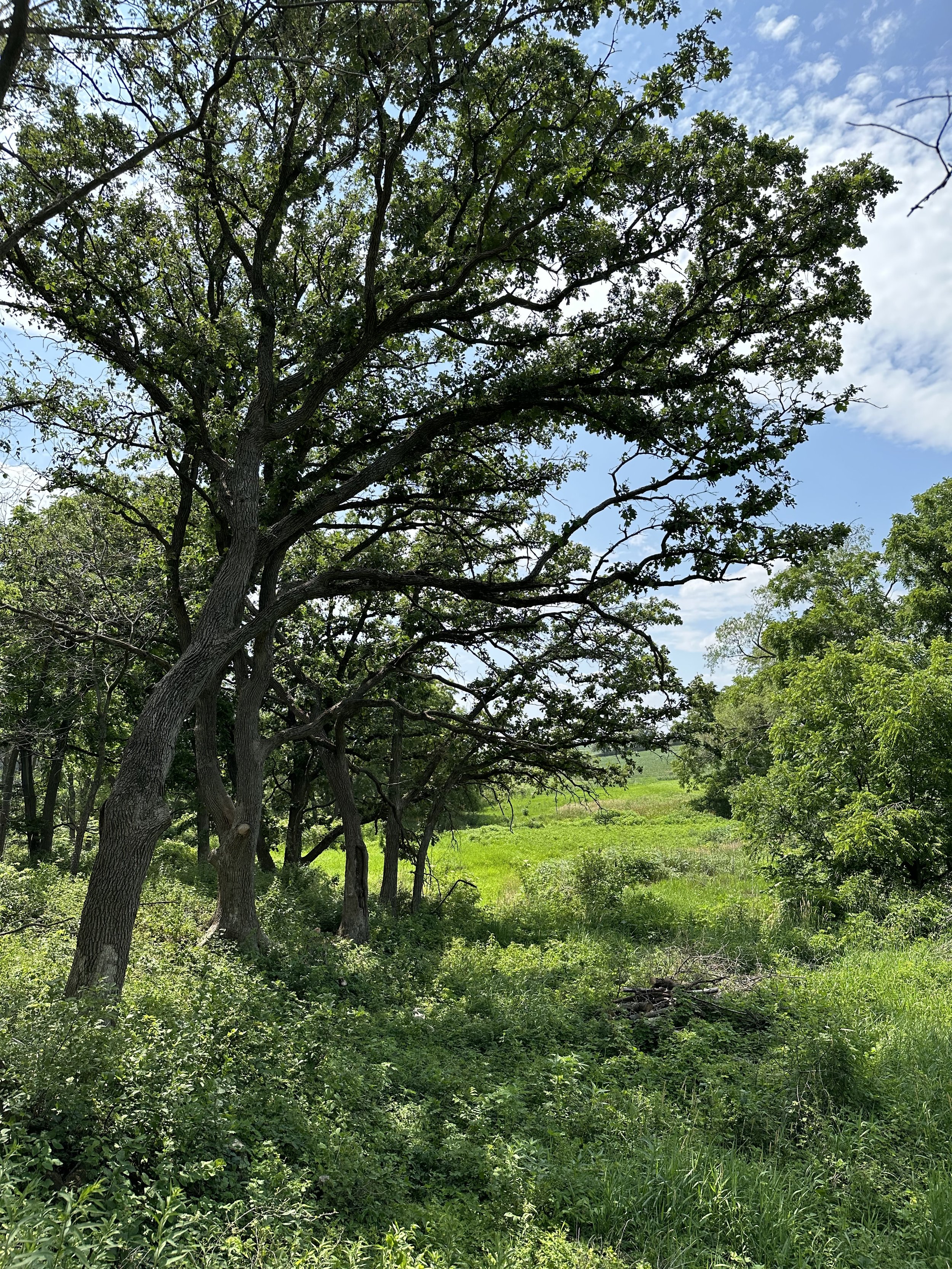
Rat Hollow Restoration
On my grandparents’ farm in southwest Iowa sits a remnant oak savanna which has been called Rat Hollow since at least the late 1800s. As a kid I played in the creek here, climbing trees and making dams in the water. It wasn’t until I began learning about ecology in my 20s that I realized this creek was much more special than the others on the farm. This was an oak savanna which has existed here for hundreds if not thousands of years. Portions of it had been logged in the early 1900s, but on the difficult-to-reach slope, they left almost 4 acres of oak woodland which has retained a surprising amount of biodiversity.
A couple of years ago I decided that I was going to restore this savanna to as close to its original state as I could. I began by removing many of the weed trees and invasive shrubs that were competing with the original oaks and occasional shagbark hickory. Many of the trees that I killed were Northern Hackberry and Siberian Elm. Unlike Bur Oaks and Shagbark Hickories, these trees are not tolerant of fire and thus not historically components of oak savannas. Their heavy shade was suppressing native plant life and causing erosion. Underneath the shade, I believed there could still be native plants that had once existed under the more open canopies of the oaks. After a couple of years of removing those problematic trees, I have seen more native wildflowers appear or get larger in their population. Michigan Lily (Lilium michiganense), White Trout Lily (Erythronium albidum), Red Columbine (Aquilegia canadensis), Culver’s Root (Veronicastrum virginicum), and Ghost Pipe (Monotropa uniflora) are just a few of the exciting discoveries I’ve made through this process. Who knows what others I have walked over or are just waiting for the right amount of sunlight warmth to reach the ground again? Occasionally weed-whipping the weeds that had taken advantage of the increased light has helped the smaller natives underneath to get a foothold and stabilize the plant community.
I had to address other concerns with the savanna as well; invasive grasses in the bottomland below, and pressure from farming right up to the savanna. Last year, with the help of the NRCS and my grandfather, we were able to get 100 feet of diverse prairie buffer planted on both sides of the waterway, sourcing the local ecotype seed from Diversity Farms near Whiterock Conservancy in Dedham, Iowa. To control the invasive reed canary grass in the waterway, I have been conducting targeted late-spring burns in hopes that native wetland species may reestablish themselves.
This project is still ongoing, and I hope to get a fall or winter burn on the timber itself once enough litter has accumulated to carry a fire. Other steps I may take are the establishment of native shrub thickets, protection of young oak trees, and seeding the bottomland areas, should it be necessary. One of my favorite parts of Rat Hollow is the presence of beavers which have been here for several years and have since constructed several dams. These dams have brought an incredible array of animals to Rat Hollow. Ducks, geese, herons, mink, turtles, and frogs all make their home here now. Not to mention the beaver’s preference for just about any bottomland tree aside from Black Walnuts, which they have completely avoided, turning the bottom into a grove of Black Walnuts and dead-standing trees which the woodpeckers and other birds happily make use of. The water in the stream also stays cleaner as sediment from upstream is stopped and settled out in the beaver dam.
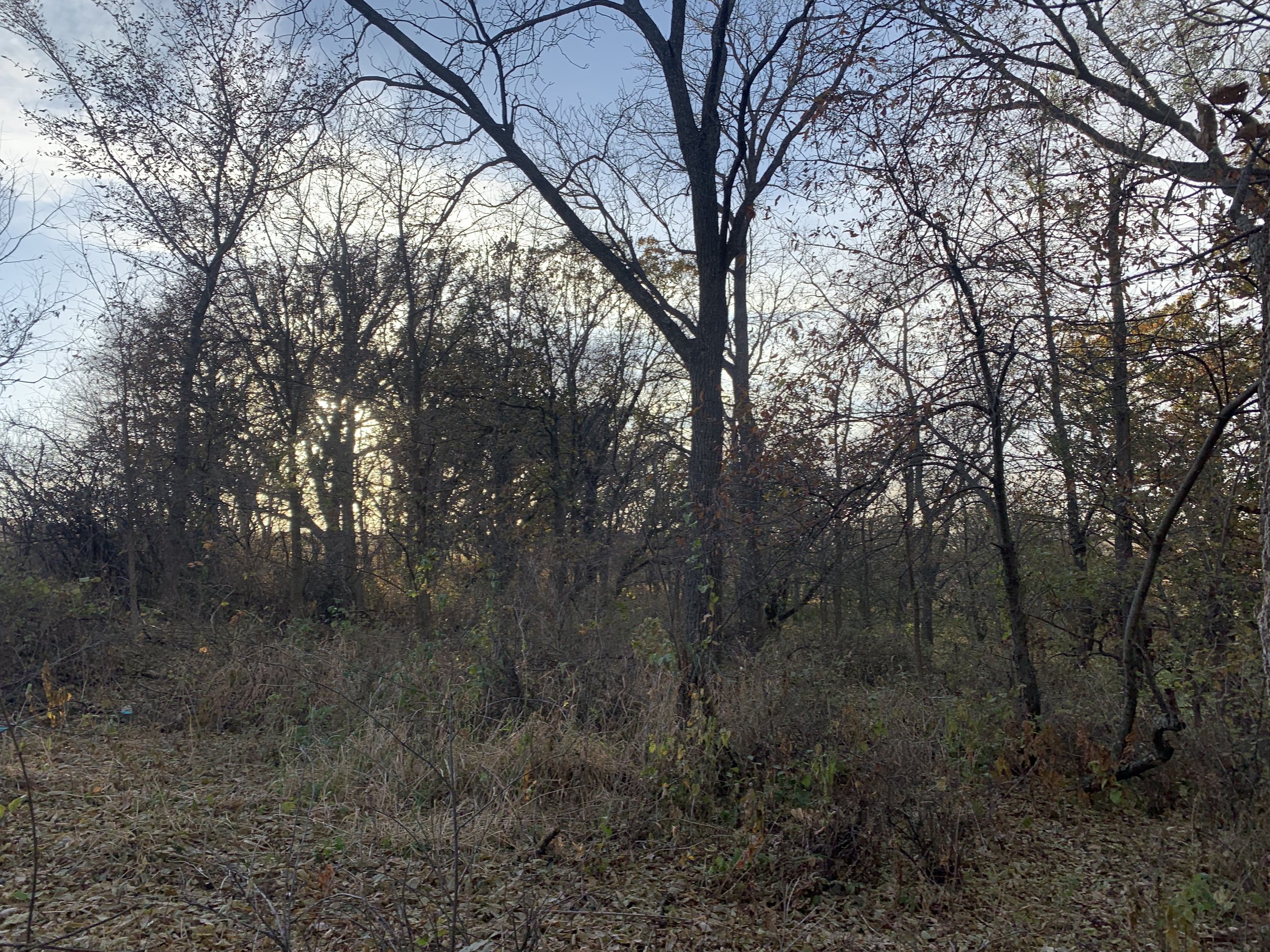
Before removing weed trees and invasive shrubs - 2022
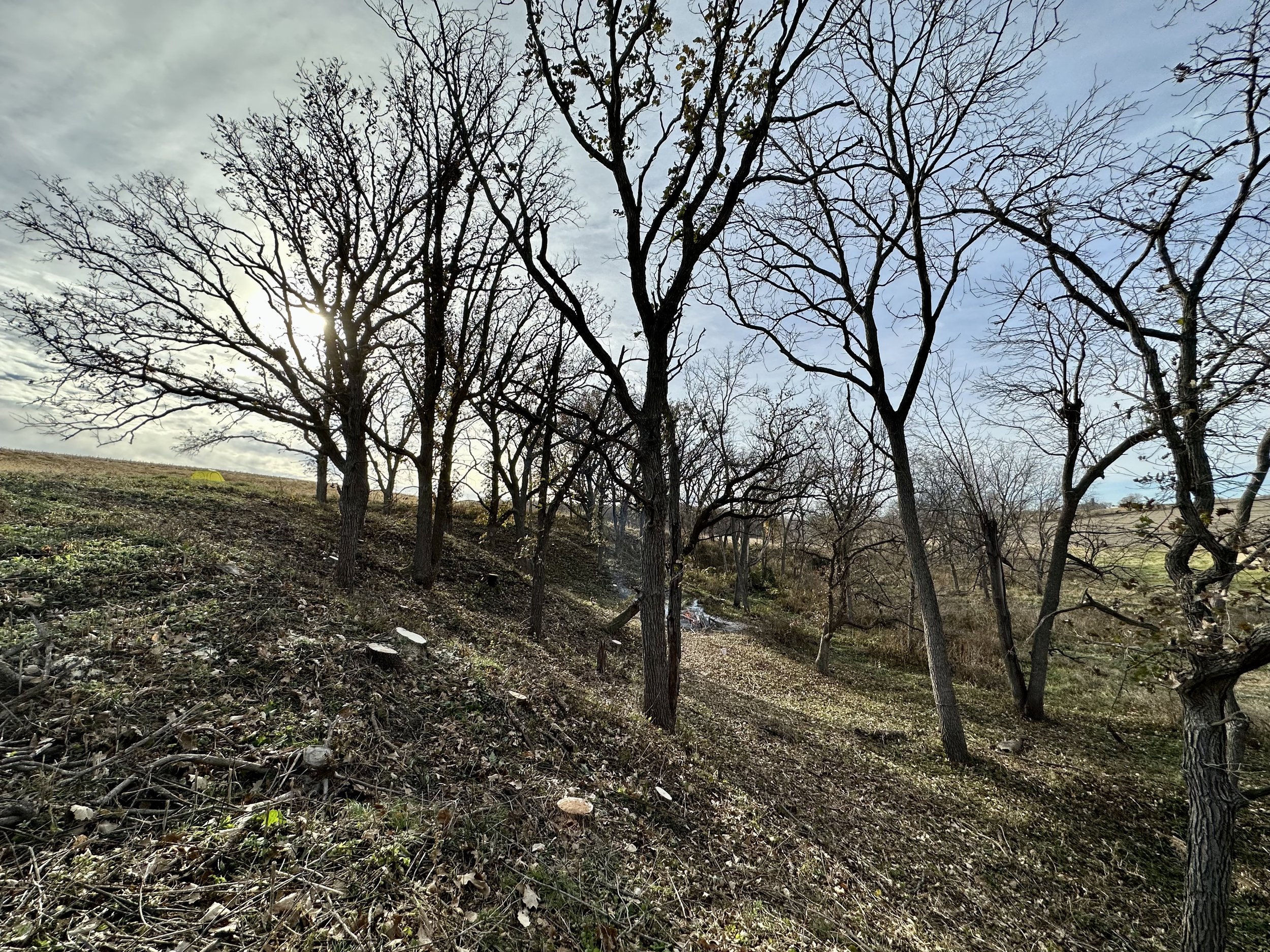
After weed tree removal and invasive shrub management. Note how open it is below now. Native grasses and sedges will soon dominate the understory - 2023
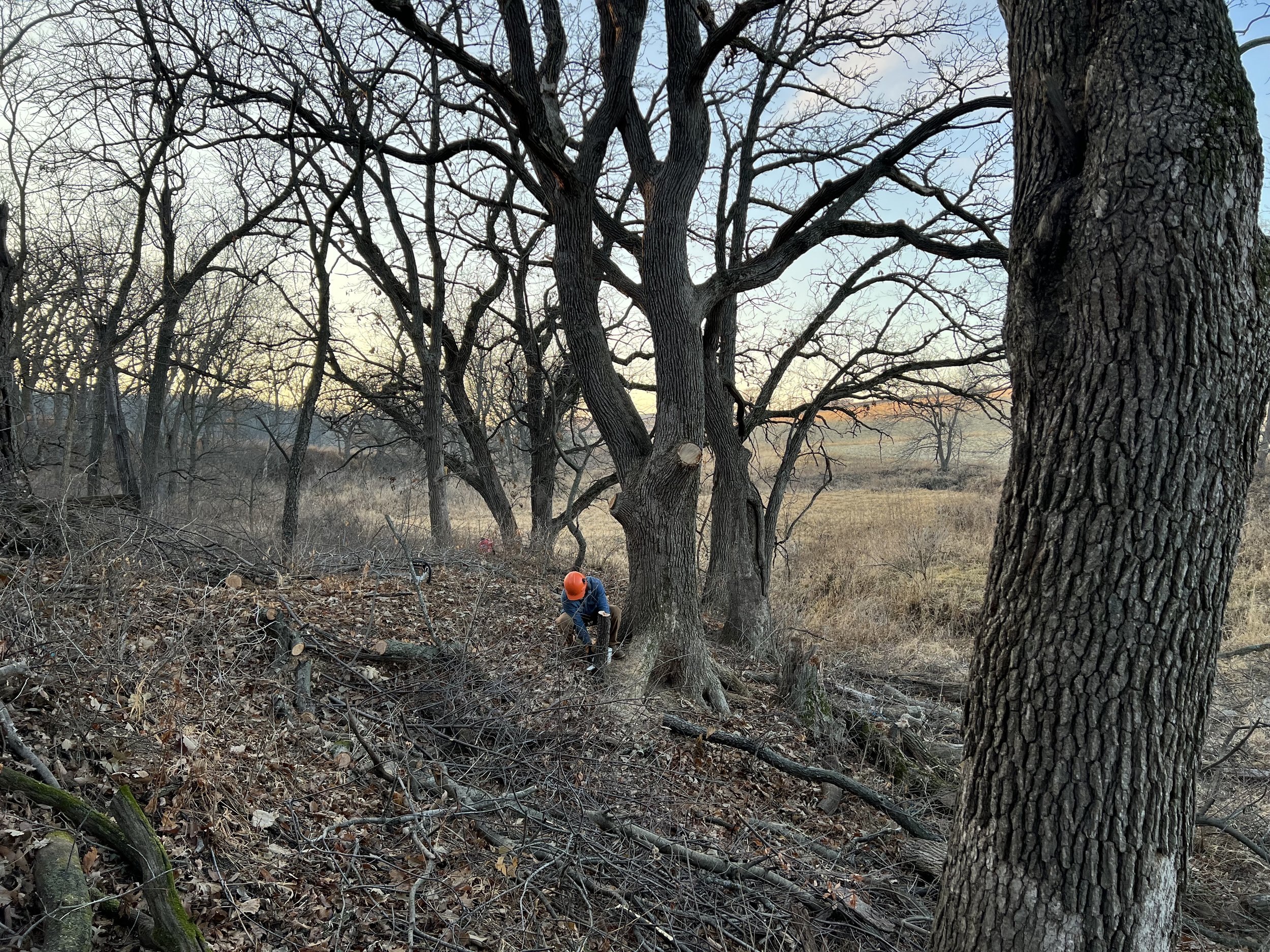
Clearing out weed trees around some veteran Bur Oaks

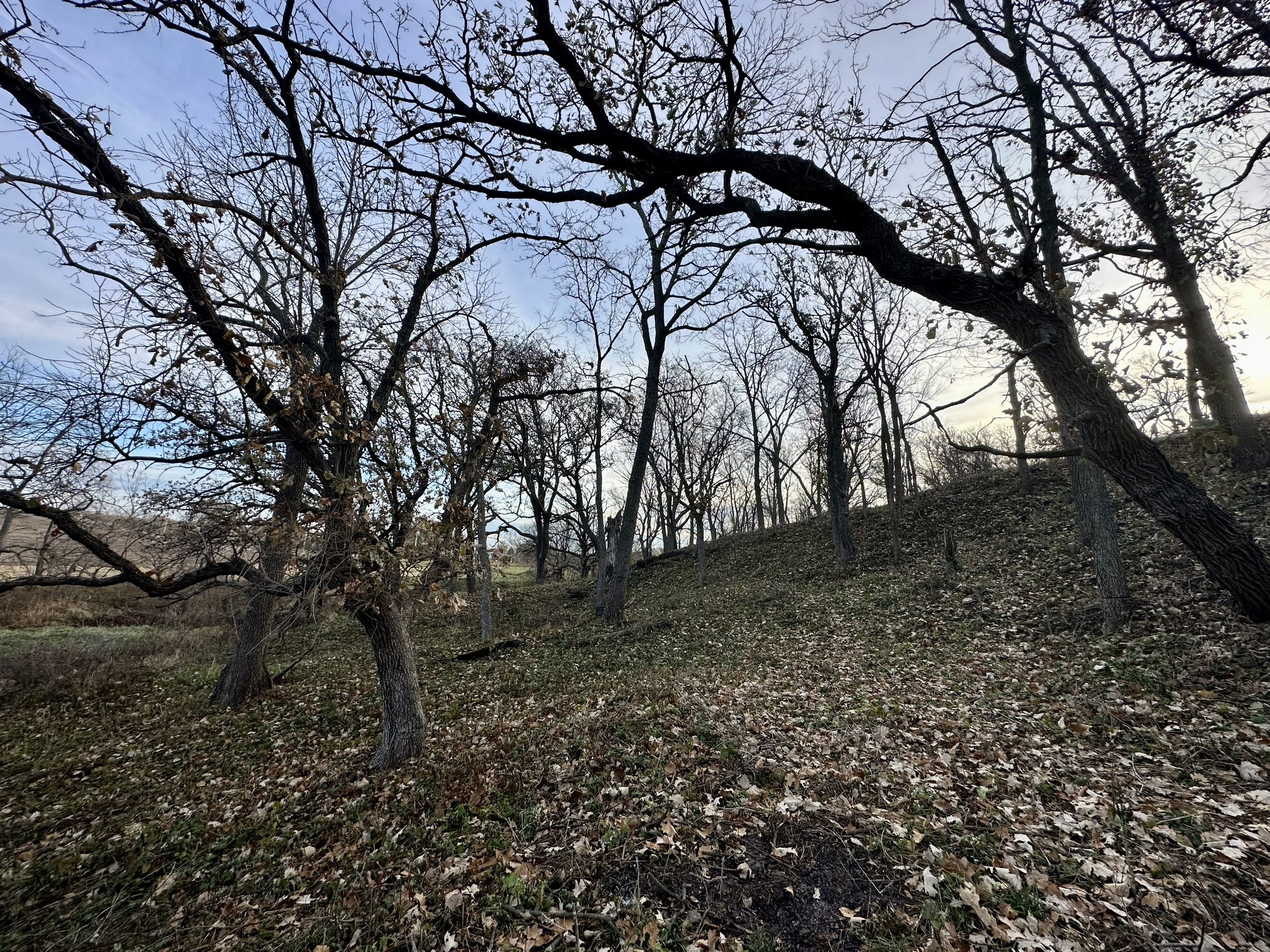
Taken in the heart of the savanna after clearing out many small dead trees. The ground remains very open after weed-eating a near monoculture of giant ragweed
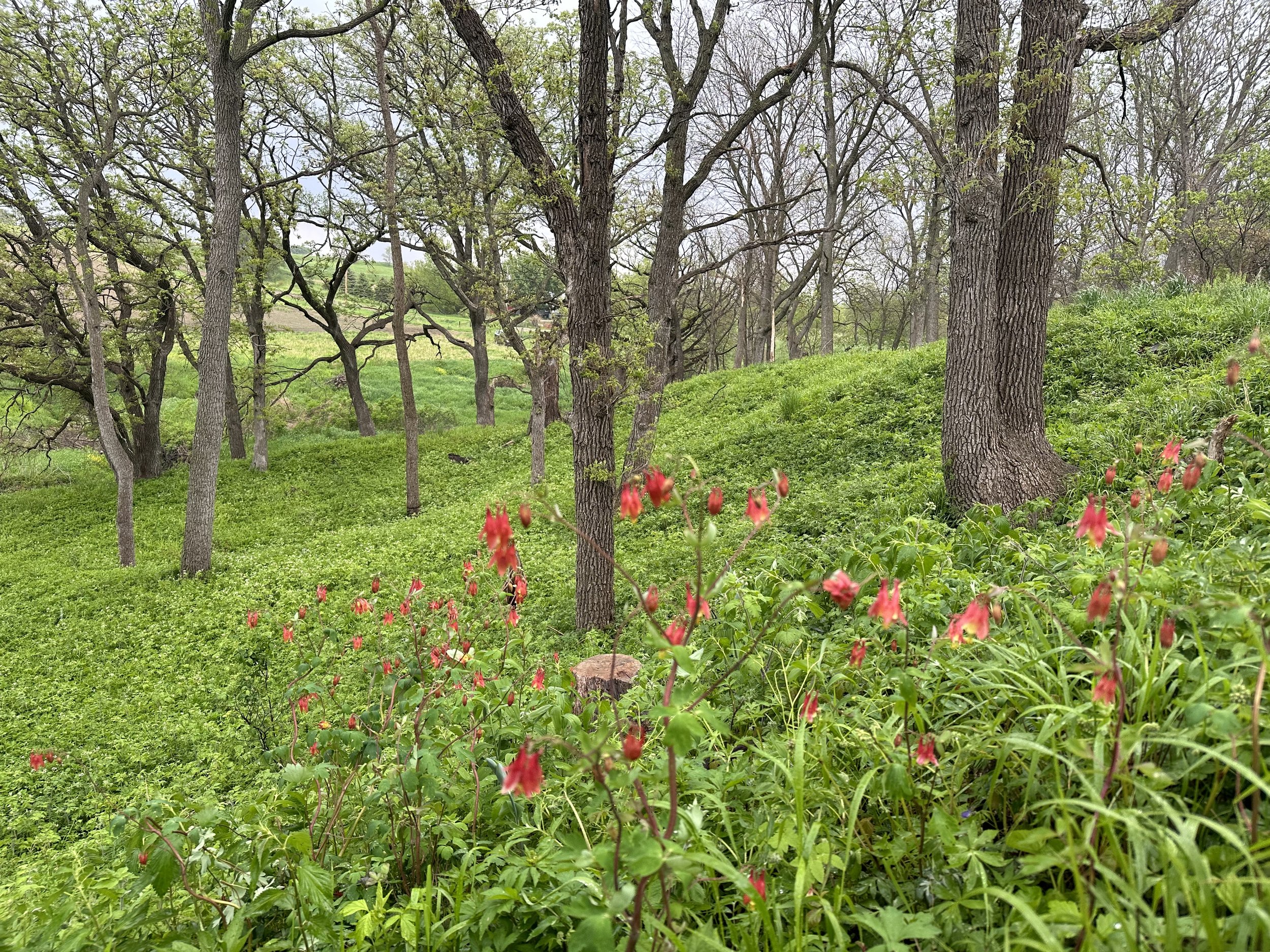
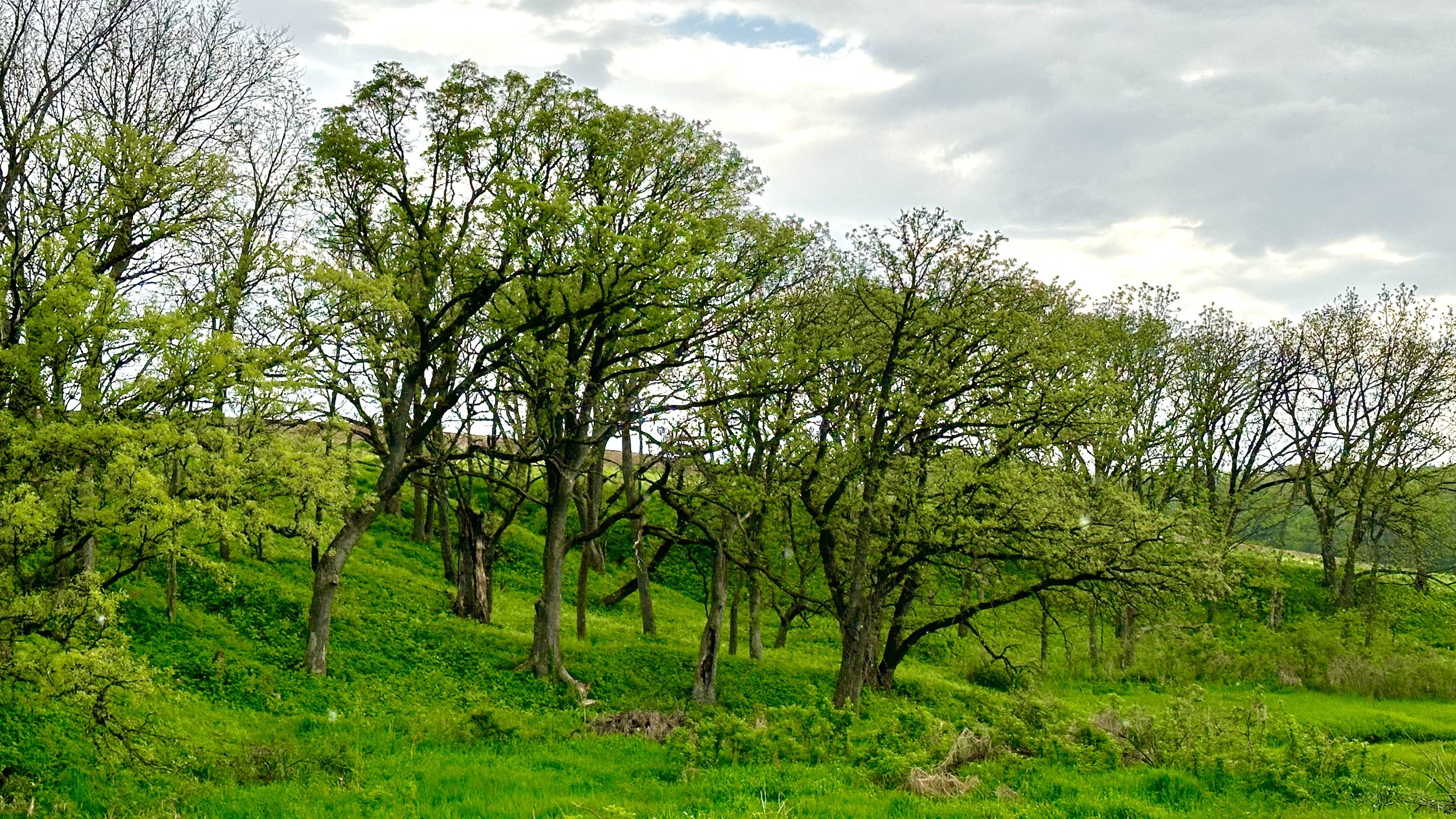

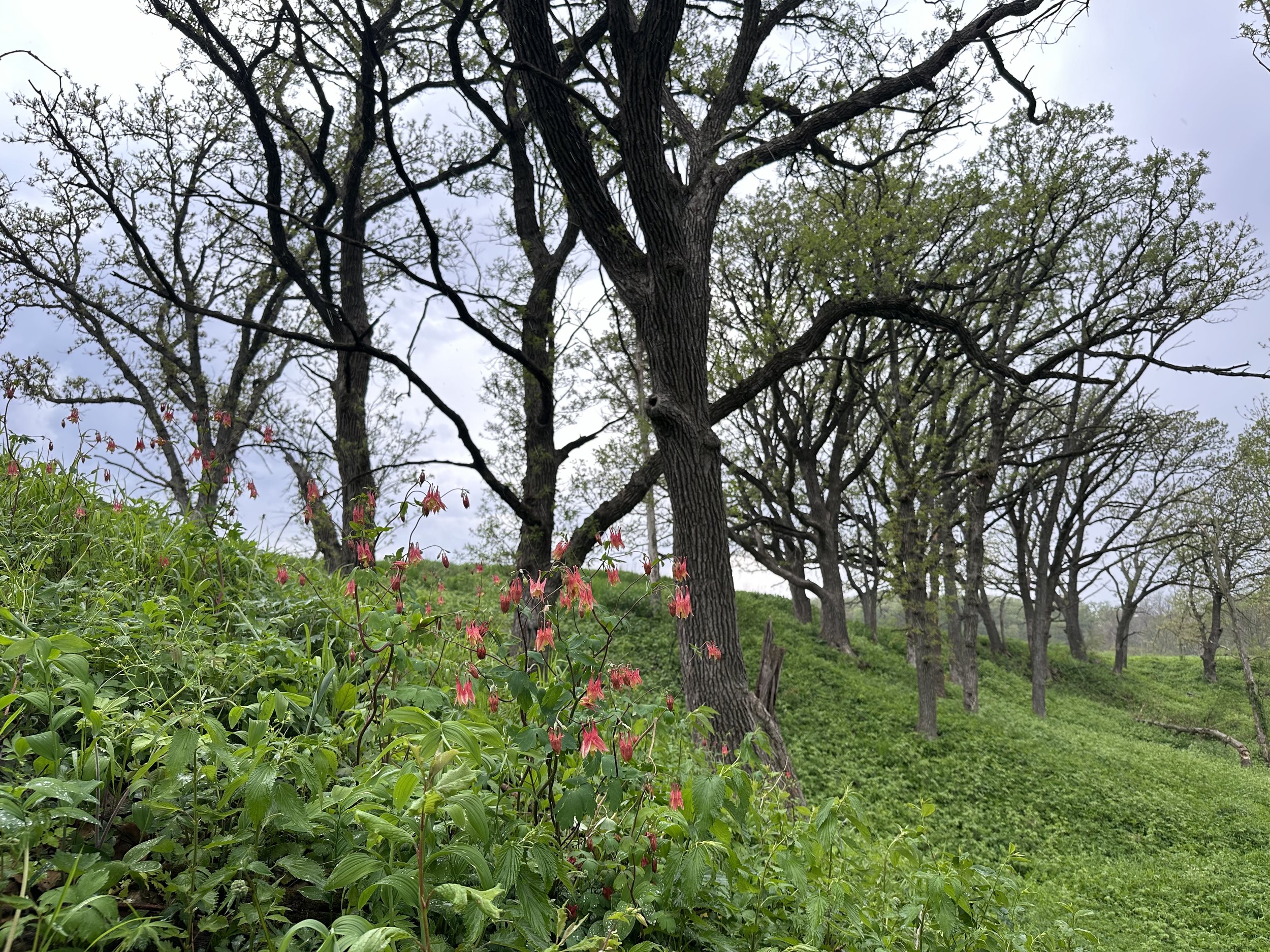

Masses of wild bergamot sprang up after a spring fire

White Trout Lily leaves peek up from the soil in early spring
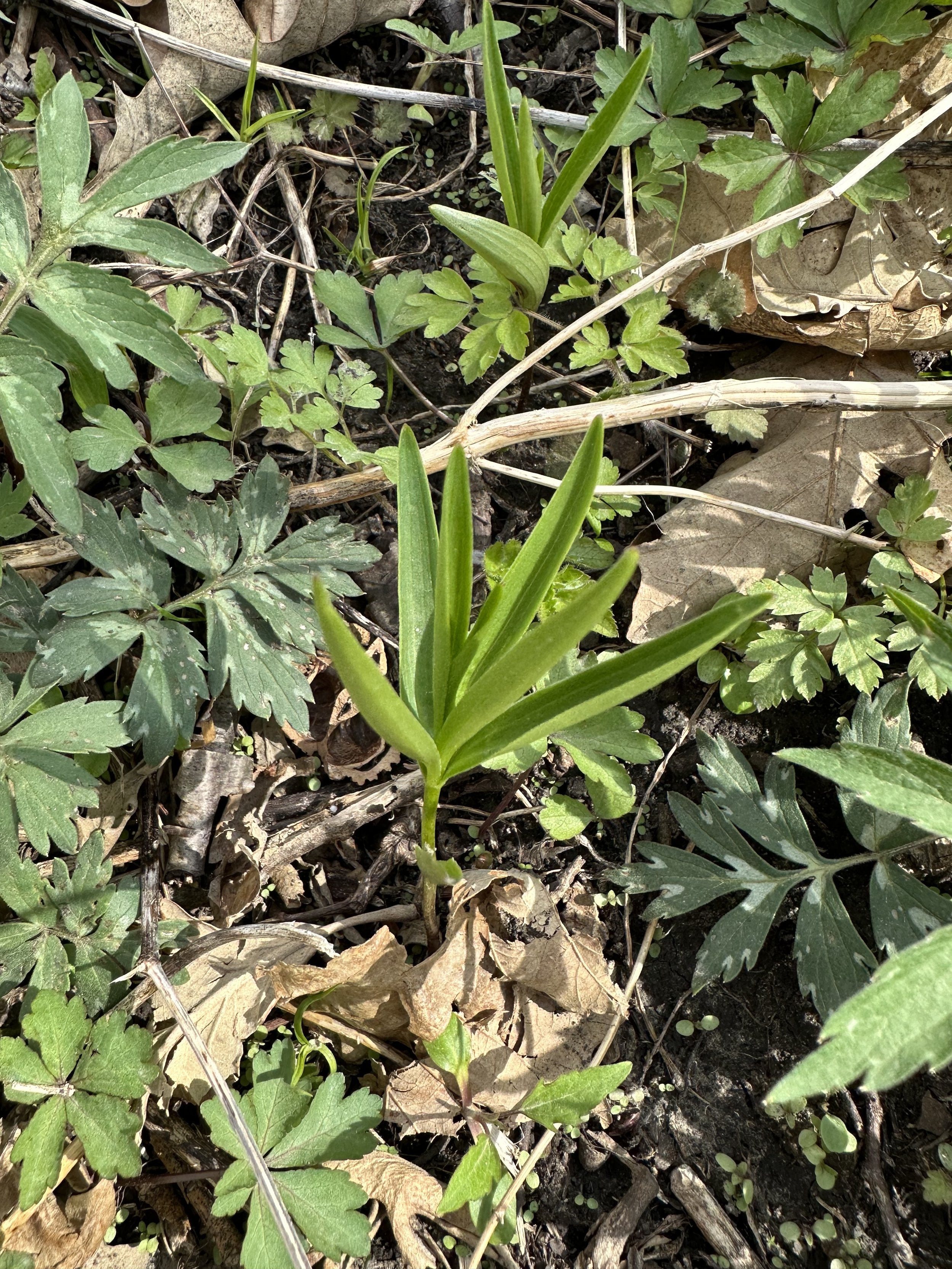
Either missed or lying dormant in the soil prior to the foresty work, these Michigan Lilies will benefit from the increased sunlight
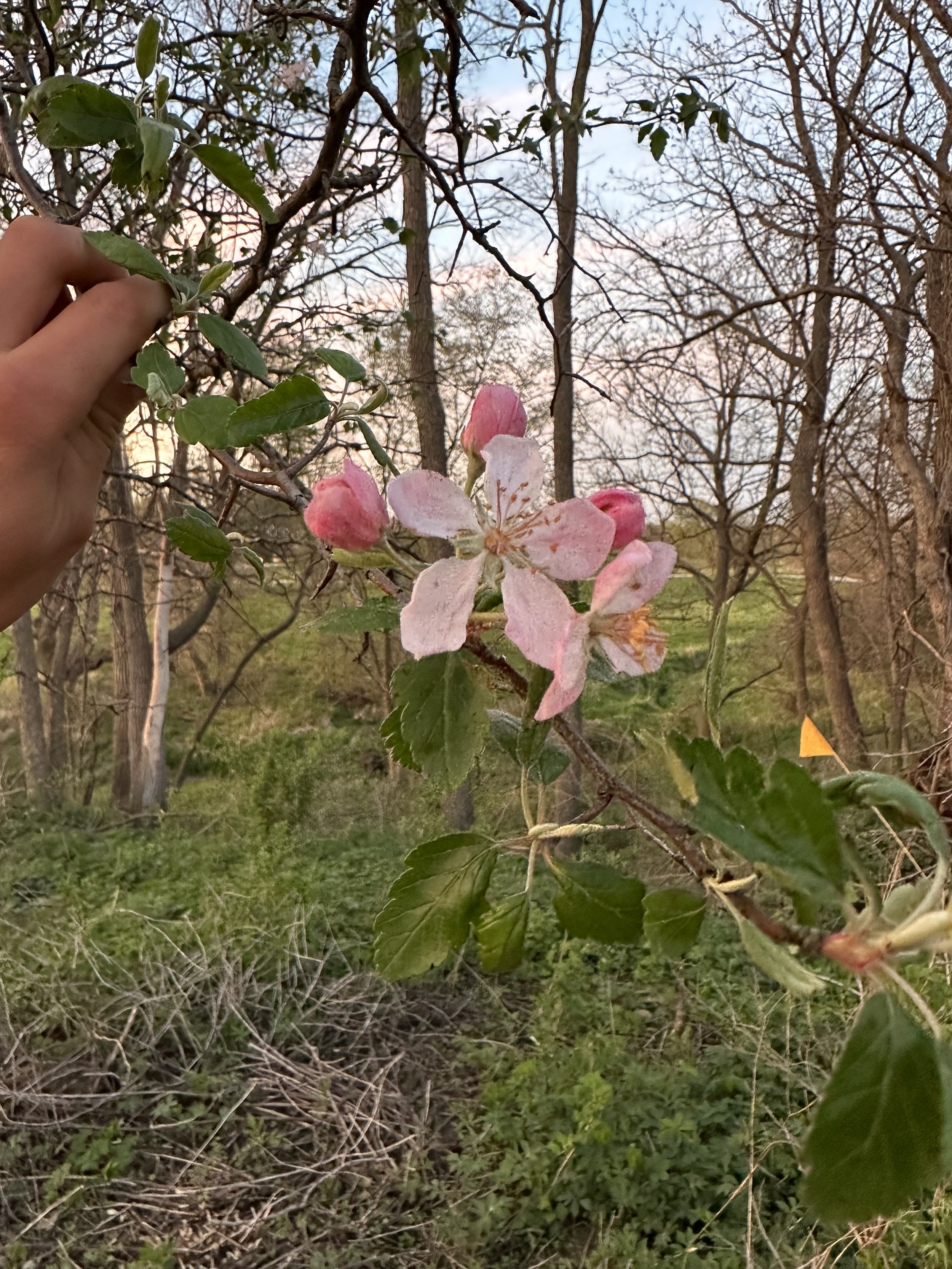
A Prairie Crabapple flower in the spring
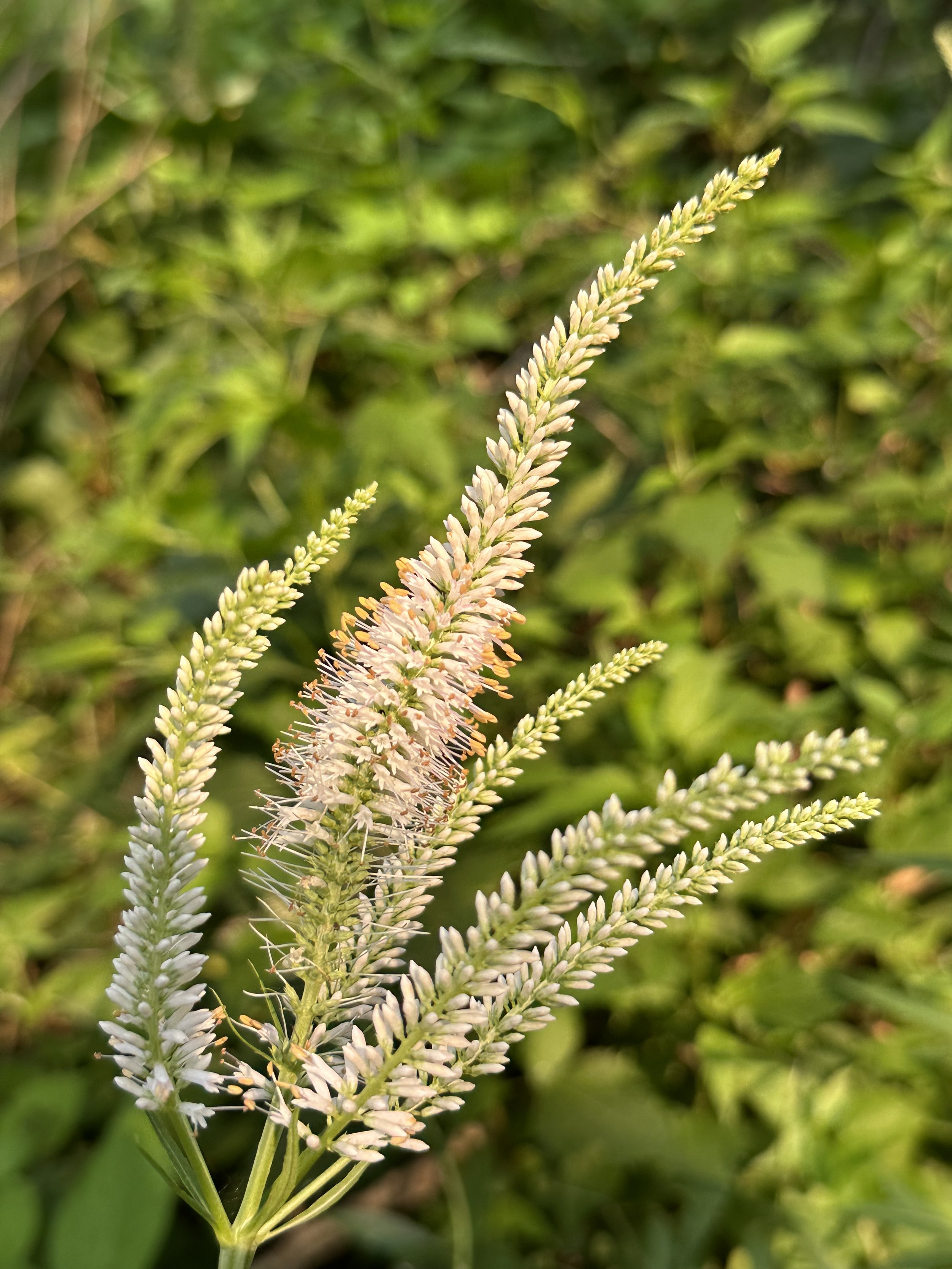
After removing weed trees, this native Culver's Root blooms for the first time in years
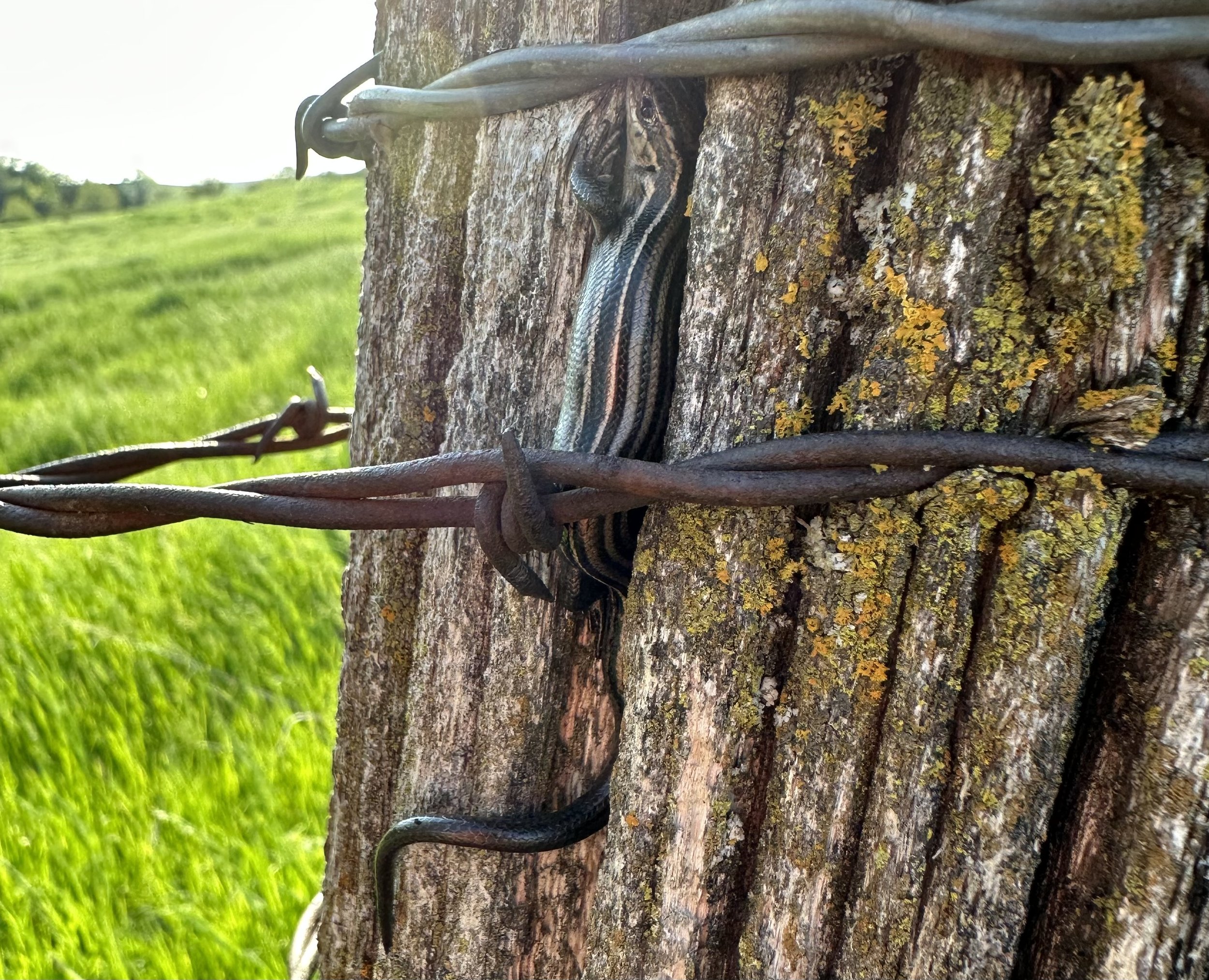
A Northern Prairie Skink find refuge on a fencepost during a prescribed fire
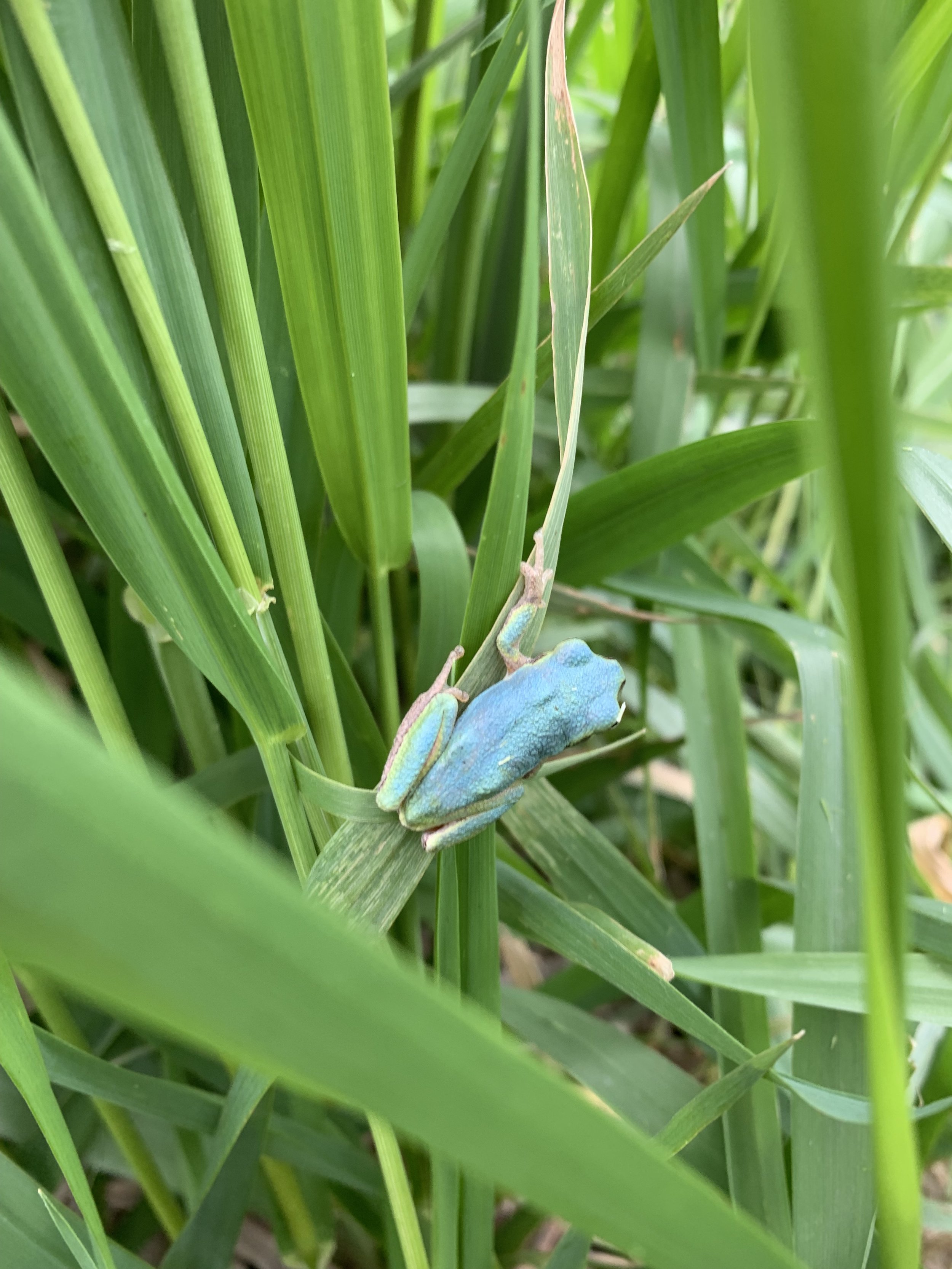
A rare Gray Tree Frog which is axanthic, meaning it has no yellow pigment, making it blue
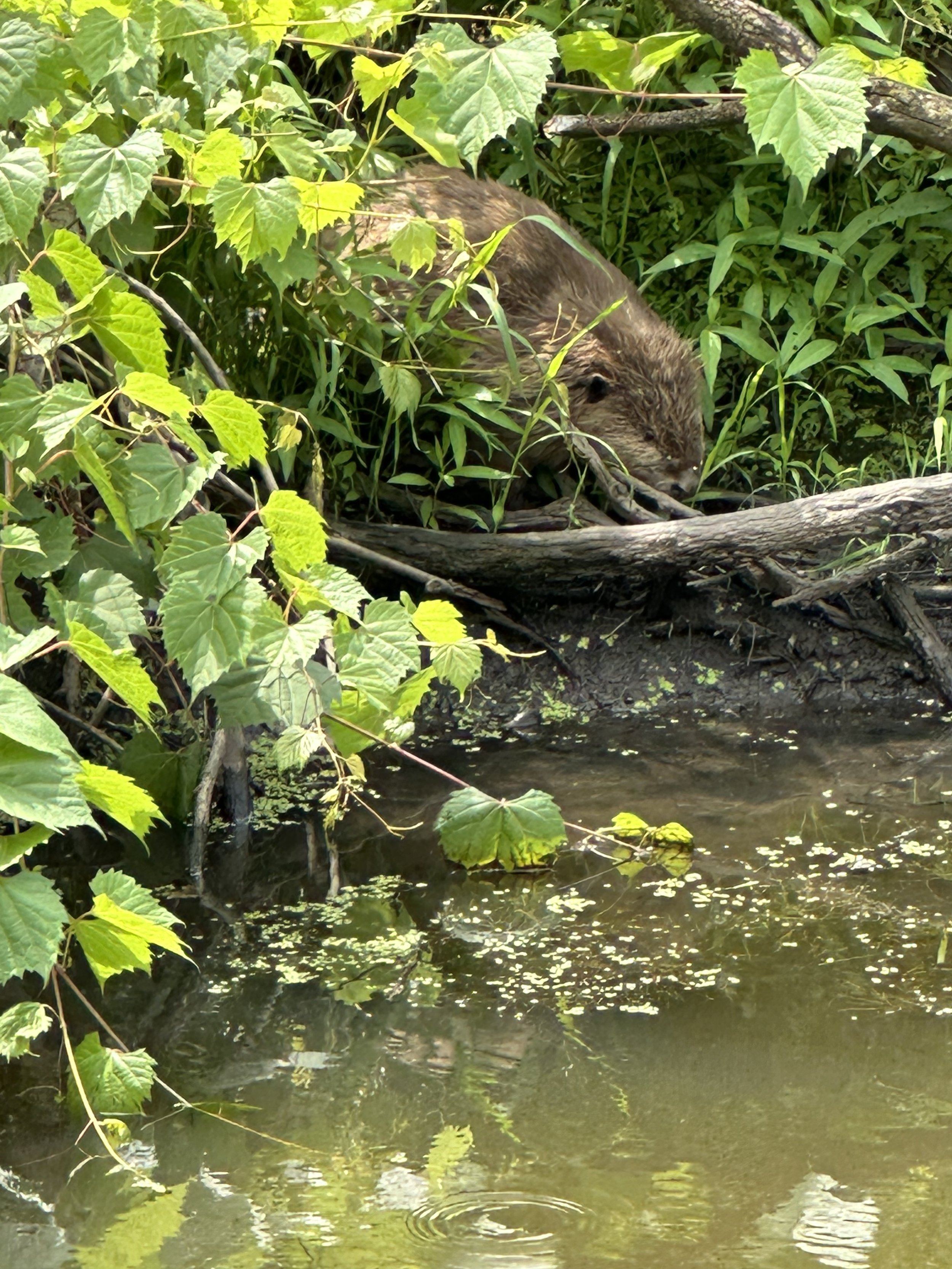
Beavers inhabit the stream at Rat Hollow, helping to improve habitat and water quality
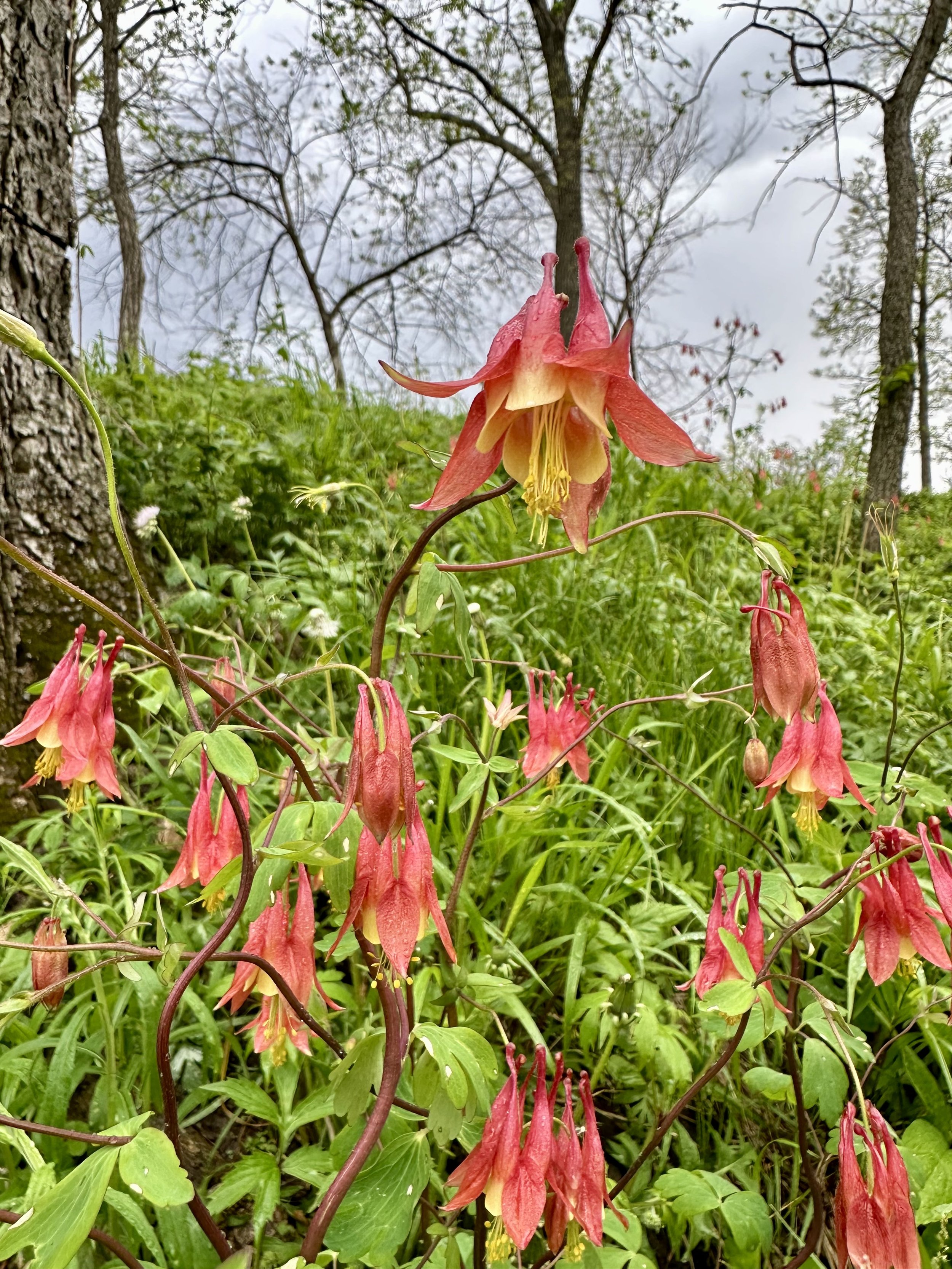
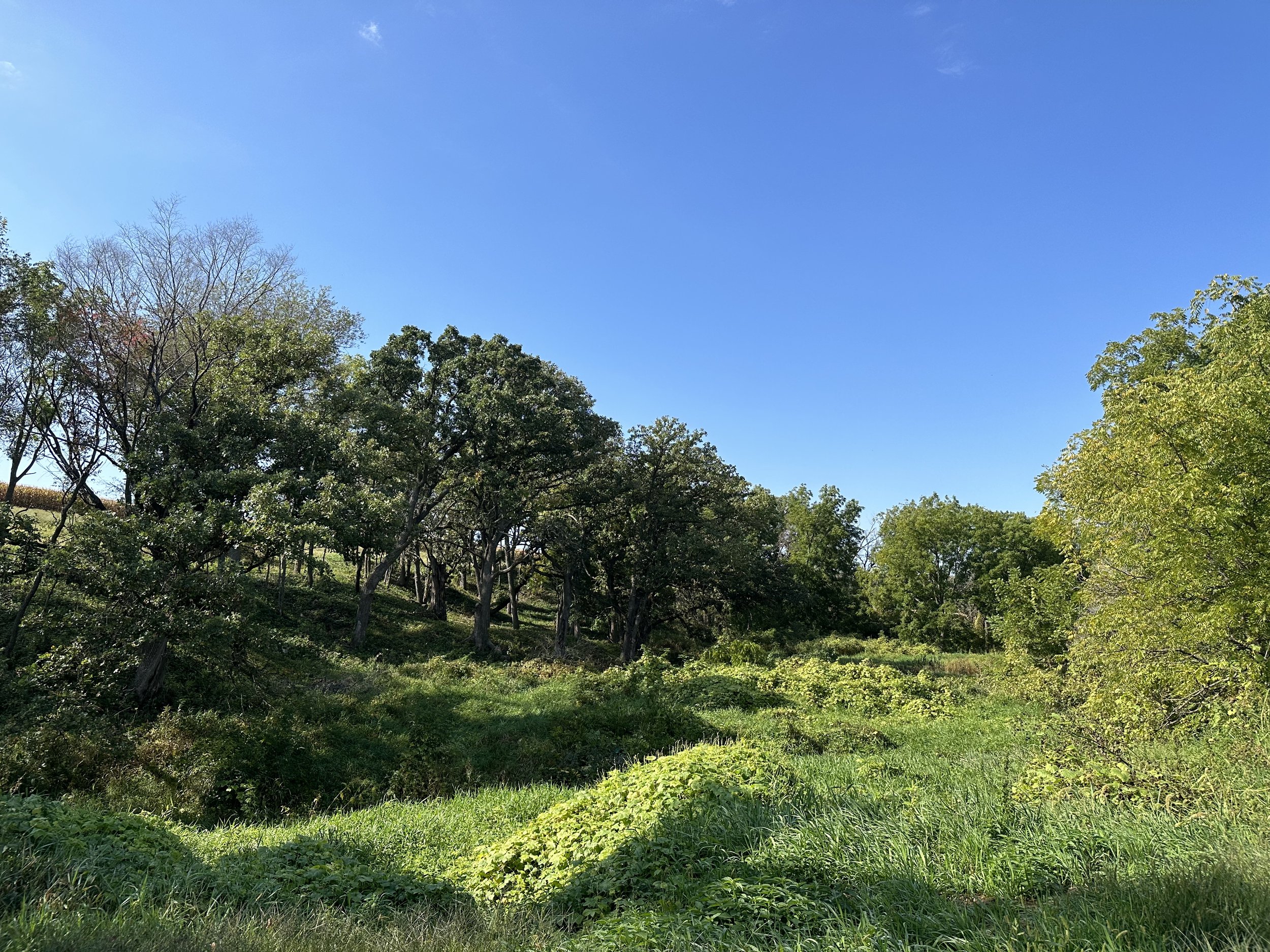
A view down the creek from the entrance onto the property
